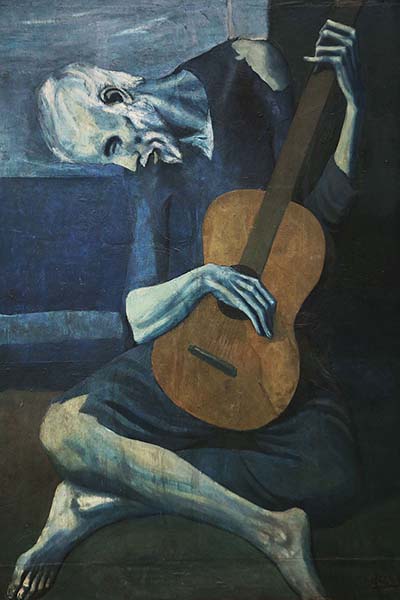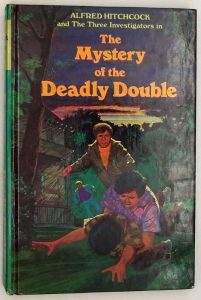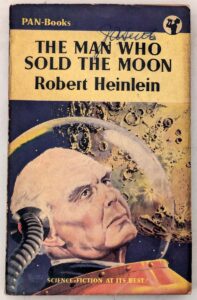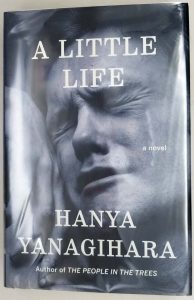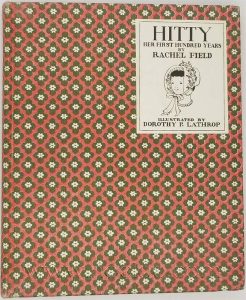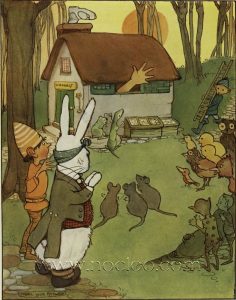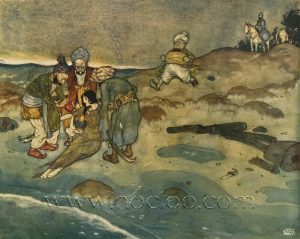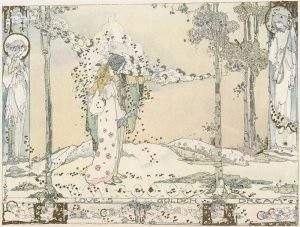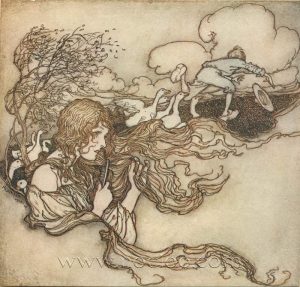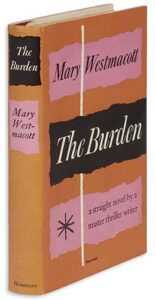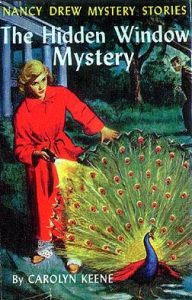Pablo Picasso [1901] - Absinthe (Girl In A Cafe) [art, paintings]
Pablo Picasso [1901] - Arlequin accoude [art, paintings]
Pablo Picasso [1901] - Arlequin et son compagnon [art, paintings]
Pablo Picasso [1901] - Au Moulin Rouge (La fille du Roi d'Egypte) [art, paintings]
Pablo Picasso [1901] - Au Moulin Rouge (Le Divan Japonais) [art, paintings]
Pablo Picasso [1901] - Au cafe [art, paintings]
Pablo Picasso [1901] - Au champ de courses [art, paintings]
Pablo Picasso [1901] - Autoportrait 'Yo' [etude] [art, paintings]
Pablo Picasso [1901] - Autoportrait 'Yo, Picasso' [art, paintings]
Pablo Picasso [1901] - Autoportrait - 'Yo' [art, paintings]
Pablo Picasso [1901] - Autoportrait [art, paintings]
Pablo Picasso [1901] - Autoportrait2 [art, paintings]
Pablo Picasso [1901] - Autoportrait3 [art, paintings]
Pablo Picasso [1901] - Ballerina [art, paintings]
Pablo Picasso [1901] - Boulevard de Clichy2 [art, paintings]
Pablo Picasso [1901] - Buveur d'absinthe [art, paintings]
Pablo Picasso [1901] - Buveuse d'absinthe [art, paintings]
Pablo Picasso [1901] - Casagemas mort [Le suicide] [art, paintings]
Pablo Picasso [1901] - Child Holding a Dove [art, paintings]
Pablo Picasso [1901] - Chrysanthemes [art, paintings]
Pablo Picasso [1901] - Clown au singe [art, paintings]
Pablo Picasso [1901] - Couple de 'Rastaquoueres' [art, paintings]
Pablo Picasso [1901] - Courses de taureaux [art, paintings]
Pablo Picasso [1901] - Courses de taureaux2 [art, paintings]
Pablo Picasso [1901] - Courses de taureaux3 [art, paintings]
Pablo Picasso [1901] - Courtisane Au Collier De Gemmes [art, paintings]
Pablo Picasso [1901] - Dans la loge (Portrait de Jane Avril) [art, paintings]
Pablo Picasso [1901] - Danseuse espagnole [art, paintings]
Pablo Picasso [1901] - Deux femmes [art, paintings]
Pablo Picasso [1901] - Etreinte [art, paintings]
Pablo Picasso [1901] - Etude pour 'La buveuse d'absinthe' [art, paintings]
Pablo Picasso [1901] - Evocation (L'enterrement de Casagemas) [art, paintings]
Pablo Picasso [1901] - Femme a la cigarette [art, paintings]
Pablo Picasso [1901] - Femme accroupie et enfant [art, paintings]
Pablo Picasso [1901] - Femme assise [art, paintings]
Pablo Picasso [1901] - Femme au bonnet [art, paintings]
Pablo Picasso [1901] - Femme au chapeau a plumes [art, paintings]
Pablo Picasso [1901] - Femme au chapeau bleu [art, paintings]
Pablo Picasso [1901] - Femme aux bas-bleus [art, paintings]
Pablo Picasso [1901] - Femme aux bijoux [art, paintings]
Pablo Picasso [1901] - Femme aux bras croises [art, paintings]
Pablo Picasso [1901] - Femme aux bras croises2 [art, paintings]
Pablo Picasso [1901] - Femme dans la rue [art, paintings]
Pablo Picasso [1901] - Femme dans le theatre [art, paintings]
Pablo Picasso [1901] - Femme de Saint-Lazare par clair de lune [art, paintings]
Pablo Picasso [1901] - Femme en bleu [art, paintings]
Pablo Picasso [1901] - Femme en robe verte assise [art, paintings]
Pablo Picasso [1901] - Femme en vert [art, paintings]
Pablo Picasso [1901] - Femme et chien [art, paintings]
Pablo Picasso [1901] - Femme nue assise [art, paintings]
Pablo Picasso [1901] - Femme portant une cape [art, paintings]
Pablo Picasso [1901] - Femme sortant du bain [art, paintings]
Pablo Picasso [1901] - Femme souriante au chapeau a plumes (Buste de femme souriante) [art, paintings]
Pablo Picasso [1901] - Femmes a la fontaine [art, paintings]
Pablo Picasso [1901] - Fille de profil [art, paintings]
Pablo Picasso [1901] - Fillette au chapeau [art, paintings]
Pablo Picasso [1901] - Fleurs [art, paintings]
Pablo Picasso [1901] - Jardin de Paris [art, paintings]
Pablo Picasso [1901] - Jeanne (Nu couche) [art, paintings]
Pablo Picasso [1901] - L'enfant au pigeon [art, paintings]
Pablo Picasso [1901] - L'enterrement de casagemas [art, paintings]
Pablo Picasso [1901] - La Madrilene (Tete de jeune femme) [art, paintings]
Pablo Picasso [1901] - La Nana [art, paintings]
Pablo Picasso [1901] - La chambre bleue (Le tub) [art, paintings]
Pablo Picasso [1901] - La chambre bleue (Le tub)2 [art, paintings]
Pablo Picasso [1901] - La conversation [art, paintings]
Pablo Picasso [1901] - La danseuse (Cancan) [art, paintings]
Pablo Picasso [1901] - La danseuse Sada Yacco [art, paintings]
Pablo Picasso [1901] - La diseuse [art, paintings]
Pablo Picasso [1901] - La femme au chignon [art, paintings]
Pablo Picasso [1901] - La jupe rouge [art, paintings]
Pablo Picasso [1901] - La lecture [art, paintings]
Pablo Picasso [1901] - La mort de Casagemas (Casagemas dans son cercueil) [art, paintings]
Pablo Picasso [1901] - La mort de Casagemas2 [art, paintings]
Pablo Picasso [1901] - La repasseusse [art, paintings]
Pablo Picasso [1901] - La ronde des fillettes (Les Blondes Chevelures) [art, paintings]
Pablo Picasso [1901] - La toilette [art, paintings]
Pablo Picasso [1901] - Le 'Divan Japonais' [art, paintings]
Pablo Picasso [1901] - Le Bassin des Tuileries [art, paintings]
Pablo Picasso [1901] - Le Roi Soleil [art, paintings]
Pablo Picasso [1901] - Le buveur d'absinthe [art, paintings]
Pablo Picasso [1901] - Le gourmet (Le gourmand) [art, paintings]
Pablo Picasso [1901] - Le gourmet [art, paintings]
Pablo Picasso [1901] - Le poete Alberto Lozano [art, paintings]
Pablo Picasso [1901] - Le quatorze juillet [art, paintings]
Pablo Picasso [1901] - Les soupeurs [art, paintings]
Pablo Picasso [1901] - Les soupeurs2 [art, paintings]
Pablo Picasso [1901] - Les toits bleus [art, paintings]
Pablo Picasso [1901] - Lis jaunes [art, paintings]
Pablo Picasso [1901] - Longchamp [art, paintings]
Pablo Picasso [1901] - Maternite [art, paintings]
Pablo Picasso [1901] - Mere et enfant [La Maternite] - [Mere tenant l'enfant] [art, paintings]
Pablo Picasso [1901] - Mere et enfant devant un vase de fleurs [art, paintings]
Pablo Picasso [1901] - Mere et enfant [art, paintings]
Pablo Picasso [1901] - Mere et enfant1 [art, paintings]
Pablo Picasso [1901] - Mere et enfant2 [art, paintings]
Pablo Picasso [1901] - Mere et enfant3 [art, paintings]
Pablo Picasso [1901] - Mere et fille au bord de la mer [art, paintings]
Pablo Picasso [1901] - Mere et son enfant [art, paintings]
Pablo Picasso [1901] - Nature morte (Le dessert) [art, paintings]
Pablo Picasso [1901] - Nu assis [art, paintings]
Pablo Picasso [1901] - Nu couche [art, paintings]
Pablo Picasso [1901] - Nu se coiffant [art, paintings]
Pablo Picasso [1901] - Nue bleue [art, paintings]
Pablo Picasso [1901] - Parodie d'Olympia [art, paintings]
Pablo Picasso [1901] - Paysan de Tolede [art, paintings]
Pablo Picasso [1901] - Picasso avec partenaire [art, paintings]
Pablo Picasso [1901] - Pierreuse, la main sur l'epaule2 [art, paintings]
Pablo Picasso [1901] - Portrait De Jaime Sabartes (Le Bock) [art, paintings]
Pablo Picasso [1901] - Portrait d'homme [Bibi-la-puree] [art, paintings]
Pablo Picasso [1901] - Portrait de Bibi-la-puree [art, paintings]
Pablo Picasso [1901] - Portrait de Gustave Coquiot [Ambroise Vollard] [art, paintings]
Pablo Picasso [1901] - Portrait de Gustave Coquiot [art, paintings]
Pablo Picasso [1901] - Portrait de Jaime Sabartes [art, paintings]
Pablo Picasso [1901] - Portrait de Lola Ruiz Picasso [art, paintings]
Pablo Picasso [1901] - Portrait de Mateu Fernandez de Soto [art, paintings]
Pablo Picasso [1901] - Portrait de Mateu Fernandez de Soto2 [art, paintings]
Pablo Picasso [1901] - Portrait de Minguell [art, paintings]
Pablo Picasso [1901] - Portrait du Pere Pedro Manach [art, paintings]
Pablo Picasso [1901] - Profil d'une jeune femme (fille avec fleur rouge) [art, paintings]
Pablo Picasso [1901] - Sada Yacco [art, paintings]
Pablo Picasso [1901] - Sur le pont superieur [art, paintings]
Pablo Picasso [1901] - Tete de Blanche [art, paintings]
Pablo Picasso [1901] - Tete de femme [art, paintings]
Pablo Picasso [1901] - Tete de femme2 [art, paintings]
Pablo Picasso [1902] - Angel Fernandez de Soto avec une femme [art, paintings]
Pablo Picasso [1902] - Autoportrait avec nu [art, paintings]
Pablo Picasso [1902] - Barcelone, paysage d'ete [art, paintings]
Pablo Picasso [1902] - Buste de femme nue [art, paintings]
Pablo Picasso [1902] - Dans un cabaret [art, paintings]
Pablo Picasso [1902] - Deux femmes nues [art, paintings]
Pablo Picasso [1902] - Femme assise au capuchon [art, paintings]
Pablo Picasso [1902] - Femme assise [art, paintings]
Pablo Picasso [1902] - Femme aux bas verts [art, paintings]
Pablo Picasso [1902] - Femme aux bras leves [art, paintings]
Pablo Picasso [1902] - Femme avec un chale [art, paintings]
Pablo Picasso [1902] - Femme en bleu [art, paintings]
Pablo Picasso [1902] - Femme fatiguee, ivre [art, paintings]
Pablo Picasso [1902] - Femme nue 1 [art, paintings]
Pablo Picasso [1902] - Femme nue 2 [art, paintings]
Pablo Picasso [1902] - Femme nue aux cheveux longs [art, paintings]
Pablo Picasso [1902] - Homme et femme (Angel Fernandez de Soto et sa compagne) [art, paintings]
Pablo Picasso [1902] - Homme et femme avec un chat [art, paintings]
Pablo Picasso [1902] - Homme et femme [art, paintings]
Pablo Picasso [1902] - L'entrevue (Les deux soeurs) [art, paintings]
Pablo Picasso [1902] - L'etreinte [art, paintings]
Pablo Picasso [1902] - La femme avec la bordure [art, paintings]
Pablo Picasso [1902] - La soupe [art, paintings]
Pablo Picasso [1902] - Le boxeur [art, paintings]
Pablo Picasso [1902] - Mere et enfant sur le rivage [art, paintings]
Pablo Picasso [1902] - Mere et enfant [art, paintings]
Pablo Picasso [1902] - Mere et fille au bord de la mer [art, paintings]
Pablo Picasso [1902] - Mere et fils sur le rivage [art, paintings]
Pablo Picasso [1902] - Misereuse accroupie [art, paintings]
Pablo Picasso [1902] - Nu couche et Picasso assis [art, paintings]
Pablo Picasso [1902] - Nu couche [art, paintings]
Pablo Picasso [1902] - Pierreuses au bar [art, paintings]
Pablo Picasso [1902] - Portrait d'homme [Homme en bleu] [art, paintings]
Pablo Picasso [1902] - Portrait de Corina Romeu [art, paintings]
Pablo Picasso [1902] - Portrait de Germaine [art, paintings]
Pablo Picasso [1902] - Portrait de Juli Gonzalez [art, paintings]
Pablo Picasso [1902] - Tete d'une femme morte [art, paintings]
Pablo Picasso [1902] - Vendeur de gui [art, paintings]
Pablo Picasso [1903] - Couple dans un cafe [art, paintings]
Pablo Picasso [1903] - Des pauvres au bord de la mer [art, paintings]
Pablo Picasso [1903] - Deux dessins erotiques [art, paintings]
Pablo Picasso [1903] - Etude de nu debout [art, paintings]
Pablo Picasso [1903] - Femme a la boucle [art, paintings]
Pablo Picasso [1903] - Femme assise [art, paintings]
Pablo Picasso [1903] - Femme nue assise [art, paintings]
Pablo Picasso [1903] - Femme nue [art, paintings]
Pablo Picasso [1903] - Femme nue2 [art, paintings]
Pablo Picasso [1903] - Heure du diner (evocation de Horta d'Ebre) [art, paintings]
Pablo Picasso [1903] - Hommage a Gauguin [art, paintings]
Pablo Picasso [1903] - Homme assis [art, paintings]
Pablo Picasso [1903] - Jeune femme au cafe courtisee par un Pierrot (L'Offrande) [art, paintings]
Pablo Picasso [1903] - L'aveugle et sa famille [art, paintings]
Pablo Picasso [1903] - L'etreinte [art, paintings]
Pablo Picasso [1903] - La vie [art, paintings]
Pablo Picasso [1903] - La vieille [art, paintings]
Pablo Picasso [1903] - Le Palais des Arts a Barcelone [art, paintings]
Pablo Picasso [1903] - Le vieux juif (Le vieillard) [art, paintings]
Pablo Picasso [1903] - Le vieux juif [art, paintings]
Pablo Picasso [1903] - Les toits de Barcelone au clair de lune [art, paintings]
Pablo Picasso [1903] - Les toits de Barcelone [art, paintings]
Pablo Picasso [1903] - Maternite [art, paintings]
Pablo Picasso [1903] - Mateu et Angel Fernandez de Soto avec Anita [art, paintings]
Pablo Picasso [1903] - Mere et enfant au bord de la mer [art, paintings]
Pablo Picasso [1903] - Mere et enfant au fichu [art, paintings]
Pablo Picasso [1903] - Paysage catalan [art, paintings]
Pablo Picasso [1903] - Petite fille debout [art, paintings]
Pablo Picasso [1903] - Portrait bleu de Angel F de Soto [art, paintings]
Pablo Picasso [1903] - Portrait d'une jeune femme [art, paintings]
Pablo Picasso [1903] - Portrait de l'artiste [art, paintings]
Pablo Picasso [1903] - Portrait de madame Soler [art, paintings]
Pablo Picasso [1903] - Portrait du tailleur Soler [art, paintings]
Pablo Picasso [1903] - Repas de l'aveugle [art, paintings]
Pablo Picasso [1903] - Riera de Sant Joan a l'aube [art, paintings]
Pablo Picasso [1903] - S Junyer-Vidal avec une femme a ses cotes [art, paintings]
Pablo Picasso [1903] - Scene erotique [art, paintings]
Pablo Picasso [1903] - Tete de femme2 [art, paintings]
Pablo Picasso [1903] - The Old Guitarist [art, paintings]
Pablo Picasso [1903] - Vieille femme se chauffant les mains au feu [art, paintings]
Pablo Picasso [1903] - Vieux mendiant et l'enfant [art, paintings]
Pablo Picasso [1904] - Acrobate au ballon (Fillette au ballon) [art, paintings]
Pablo Picasso [1904] - Au 'Lapin Agile' (Arlequin tenant un verre) [art, paintings]
Pablo Picasso [1904] - Deux personnages [art, paintings]
Pablo Picasso [1904] - Famille du cirque [art, paintings]
Pablo Picasso [1904] - Femme a la chemise [art, paintings]
Pablo Picasso [1904] - Femme a la corneille II [art, paintings]
Pablo Picasso [1904] - Femme a la corneille [art, paintings]
Pablo Picasso [1904] - Femme accoudee [art, paintings]
Pablo Picasso [1904] - Femme au chignon [art, paintings]
Pablo Picasso [1904] - Femme couchee [art, paintings]
Pablo Picasso [1904] - Femme dormante (Meditation) [art, paintings]
Pablo Picasso [1904] - Homme nu assis et femme nue debout [art, paintings]
Pablo Picasso [1904] - L'acteur [art, paintings]
Pablo Picasso [1904] - La Celestine [art, paintings]
Pablo Picasso [1904] - La Celestine2 [art, paintings]
Pablo Picasso [1904] - La repasseuse [art, paintings]
Pablo Picasso [1904] - Le baiser [art, paintings]
Pablo Picasso [1904] - Le fou (L'idiot) [art, paintings]
Pablo Picasso [1904] - Le fou [art, paintings]
Pablo Picasso [1904] - Le repas frugal [art, paintings]
Pablo Picasso [1904] - Le saltimbanque [art, paintings]
Pablo Picasso [1904] - Le sculpteur catalan Manolo (Manuel Hugue) [art, paintings]
Pablo Picasso [1904] - Les Noces de Pierrette [art, paintings]
Pablo Picasso [1904] - Les amants [art, paintings]
Pablo Picasso [1904] - Les deux amies [art, paintings]
Pablo Picasso [1904] - Les deux amies2 [art, paintings]
Pablo Picasso [1904] - Madeleine [art, paintings]
Pablo Picasso [1904] - Mere et enfant - Etude de mains [art, paintings]
Pablo Picasso [1904] - Nu dormant [art, paintings]
Pablo Picasso [1904] - Picasso et S Junyer-Vidal assis pres de Celestine [art, paintings]
Pablo Picasso [1904] - Portrait de Jaume Sabartes [art, paintings]
Pablo Picasso [1904] - Portrait de Manolo Hugue [art, paintings]
Pablo Picasso [1904] - Portrait de Sebastia Junyent [art, paintings]
Pablo Picasso [1904] - Portrait de Sebastia Junyer-Vidal [art, paintings]
Pablo Picasso [1904] - Portrait de Suzanne Bloch [art, paintings]
Pablo Picasso [1904] - Vase de fleurs [art, paintings]
Pablo Picasso [1904] - Vieillard aveugle et fillette [art, paintings]
Pablo Picasso [1904] - Vierge a la guirlande [art, paintings]
